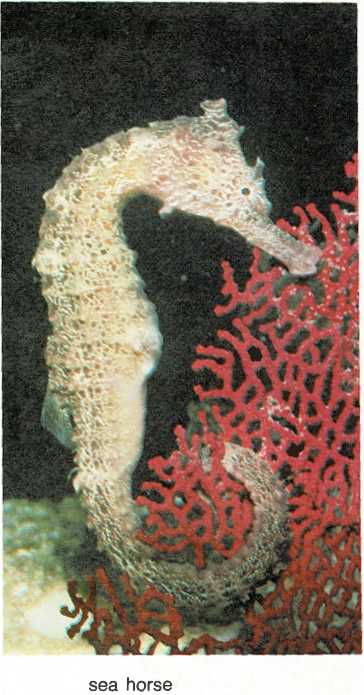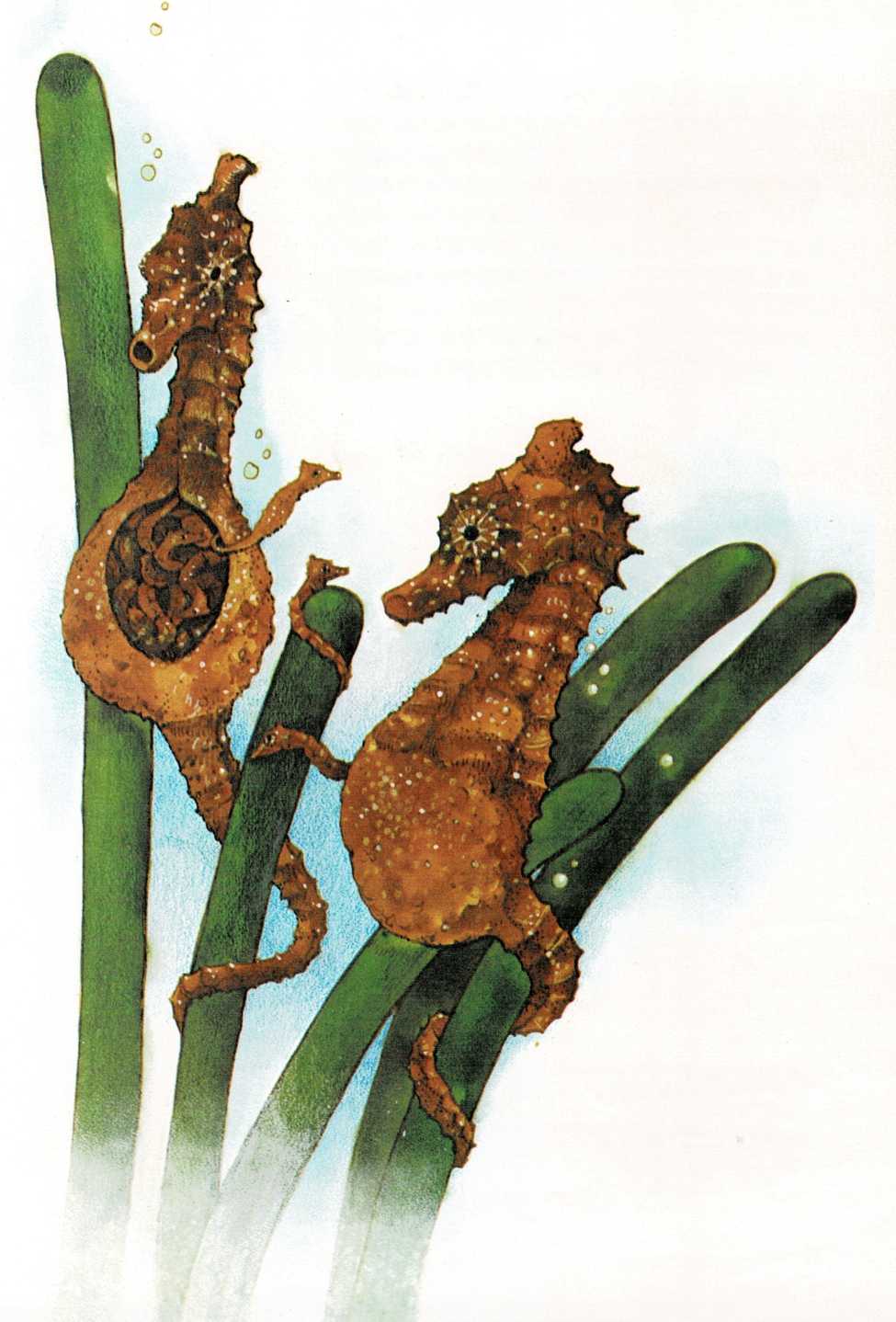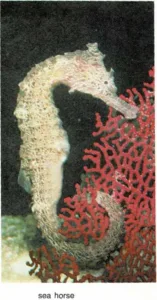
Sea horses
Someone once described the sea horse as a fish with the head of a horse,
the tail of a monkey, the hard, outer shell of an insect, and the pouch
of a kangaroo! And this is a good description. The sea horse certainly
is a strange-looking creature that doesn’t look or act much like any
other kind of fish.
This small, odd-shaped fish has a head that looks like the head of a
tiny horse, which is why it is called a sea horse. And it has a long
tail with which it holds on to seaweed, much the way a monkey hangs by
its tail.
A sea horse’s body is covered with hard, bony bumps and ridges. Its
eyes, which are on little bumps, can be moved so that the sea horse can
look in different directions at the same time! Instead of swimming by
moving its tail, as other fish do, the sea horse swims by rapidly
wiggling its back fin. And it swims with its body straight up and down!
But perhaps the oddest thing of all about sea horses is that the babies
come out of the father’s body. Actually, the eggs are laid by the
mother, as is the case with most egg-laying animals. But the mother lays
the eggs in a special pouch on the father’s body. The eggs hatch in
about four weeks. Then, when the babies are ready to leave the pouch,
the father bends and jerks his body, squirting the babies out one at a
time.
The sea horse certainly doesn’t look fierce, but in its own small way
it’s as fierce as a shark. It is a hearty eater that needs a lot of
food. And it will eat any swimming creature that’s small enough to fit
into its tiny mouth.

When a sea horse sights its prey, perhaps a tiny shrimp or baby fish,
it swims toward it. When it reaches its prey, there is a crackling
sound as the sea horse sucks the little creature into its long,
tubelike mouth.Sea horses grow to be about five inches (13 centimeters) long. They
live among seaweed, in shallow water close to shore. There are twenty
different kinds of sea horses. They are found in places where the
water is warm all year.A mother sea horse lays eggs in a pouch on the father sea horse’s
stomach. The eggs hatch inside the pouch. Then the pouch opens and
closes, squirting the babies out into the water.

